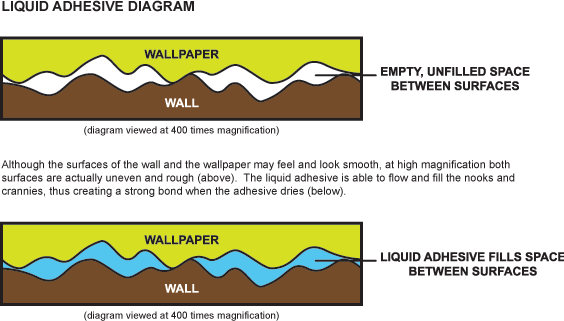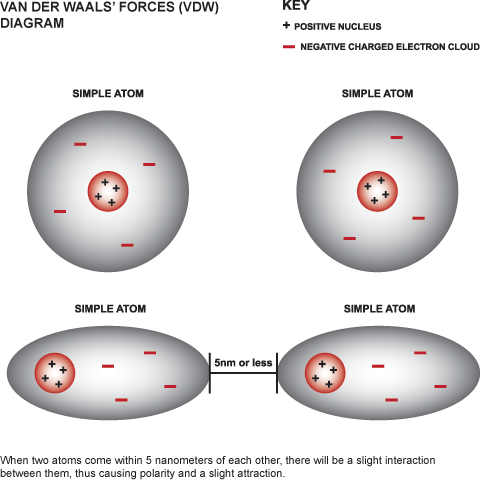
Return to Lesson Plan Index
Printer Friendly Version
Grades: 4-8
Author: Dr. Katherine Owens
Source: Adapted from Chemecology Vol. 22, March 1993 (Chemical Manufacturing Association publication)
Students will make a simple device to test the stickiness (adhesion) of household "glues" to determine strength or weakness of the substance to stick two surfaces together. This experience leads to a discussion of adhesion, adhesives (glues), product testing, and applications to daily life. Optional suggestions for Internet research on adhesives are provided.
What should students know as a result of this lesson?
What should the students be able to do as a result of this lesson?
Engagement
Introduce students to the topic of adhesives by discussing sticky-stuff encountered in everyday life. Shape the discussion so that natural substances, rather than elastomers or polymeric materials are used as examples. Ask students if they ever blew a large enough bubble with their bubble gum that it popped all over their faces. How easy was it to remove the gum? Was it easy to remove gum that may have gotten tangled in your hair? How about gum that you stepped on and later had to remove from the bottom of your shoe or from the carpet? A brief demonstration may get students thinking of how natural substances can be thought of as adhesives although they aren't usually used as glues or pastes. Show students a sandwich cookie. Then, twist the cookie layers and pull apart. Notice that the cream filling sticks to one cookie rather than falling off of the cookie - the filling acts like a natural adhesive. Variation: if students conduct this demonstration, they can eat the cookie. Be sure, however, that in the experiment that follows, students are cautioned NOT to eat the natural "adhesives" that they will be testing. Ask students what they think makes a "good" adhesive. Ask students what other natural sticky substances might make a good adhesive material. See the suggestions in the materials list. Ask students how they could test to see if these substances would be good adhesives. Does the surface that the sticky substance is put on make a difference? Tell students that they will be testing some common household materials to see if they would make good adhesives.
Assessment: Monitor students' answers to your questions to be sure everyone understands the goals of the lesson. Before proceeding, be sure that students understand the posed problem.
Exploration
Do a quick demonstration of how to set up the equipment to make the apparatus for testing the stickiness of the materials to be tested.
Allow students to make four choices of sticky substances (for example: honey, white corn syrup, peanut butter, jelly, molasses, paste made from flour and water) for testing on each of the three surfaces (paper, aluminum foil, and plastic wrap). Despite the taping of the testing surface to the work surface, one member of the group will have to secure/hold down the testing surface, so that when the sticky substance test is occurring, the testing surface will not release when the cup releases from the sticky substance. Note: students will need to wipe the bottom of the testing cup between each sticky substance test. The number of pennies needed to release the cup from the sticky substance should be recorded in a data chart. Have students record their group's data on a class chart so that after all groups have finished data for similar tests can be compared, a mean can be found, and a class graph can be made.
Assessment: Monitor students' work to check that they are carrying out procedures carefully, making observations, and recording data accurately.
Explanation
Have students report their findings. Using the class' chart compare and contrast the data for tests of the same sticky substance. Have students find the mean number of pennies for each substance tested and construct a class graph to display these findings. How do these adhesives compare to each other? Which one forms the strongest bond between the cup and the paper, between the cup and the foil, and between the cup and the plastic wrap?
Explain the term adhesion and give some common examples (see content knowledge). Ask the students to provide more examples of their own. Introduce the term adhesive and give some common examples. Ask students to tell about their experiences of using an adhesive that "didn't stick" or that stuck too much (pull off a bandage - we all know that this activity isn't always pleasant). In the course of the discussion, students should be able to explain how the usefulness of a manufactured product depends on its function for a particular purpose. Explain that scientists and engineers develop adhesives for special purposes and products.
Assessment: Listen to students' accounts of their findings to judge if their reports are supported by the findings that you observed as experiments were being conducted. Monitor students' answers to questions asked in the discussion about different products having different uses for completeness and accuracy. Ask students to write their own definitions of adhesion and adhesive in their science notebooks.
Elaboration
A. Student research project - searching for information on adhesives. See the Rubric for further detail. Suggested topics include the following:
B. Ask students to design a test to determine the strength of various types of pressure-sensitive adhesives (tapes); students could make a drawing of their apparatus and describe their procedures. Students could conduct their tests using masking tape, cellophane tape, painters' tape, duct tape, first aid tape, etc. Collected data should be graphed; report should show evidence of students' understanding of adhesion; letters reporting the results to the manufacturer of each type of tape could be written.
Assessment: See Rubric for more details and grading criteria.
Complete a data table; make graph using collected data; use the Internet to search for information; realize that edible materials when used within a lab investigation should not be eaten.
NGSS Standards:
Common Core Standards:
National Standards:
Ohio Standards:
When dissimilar materials bond together we say that they exhibit the property of adhesion (for example, water on glass, paint on a wall, or frosting on a cake). When similar materials bond together we say that they exhibit the property of cohesion (for example, in clouds tiny water droplets join together to form rain, packing tape that wrinkles as you pull it off the roll sticks to itself and becomes hard to pull flat or wet sand grains stick together to let us build a sand castle).
Adhesives should have two properties - they should be "liquid like" so that they can flow across a surface to fill in tiny pores on the surface (see diagram below). Adhesives can be "wet", that is viscous, as in glue and paste or "dry", such as static cling or that used on the back of tapes.

Adhesives bond items together. There are natural adhesives made from plant matter such as starch and animal matter such as casein. Synthetic adhesives can be elastomers, thermoplastics, or thermosetting adhesives. Drying adhesives, such as white glue or rubber cement, consist of a mixture of polymeric materials in a solvent. When the solvent evaporates, the adhesive hardens. To be effective boding agents some adhesives require that the two surfaces be spread with the adhesive, which must dry for some time before the surfaces can be put together. This kind of adhesive is used in the making of shoes. The hot glue gun is an example of a hot adhesive a thermoplastic material that hardens upon cooling. Pressure-sensitive adhesives (tapes) can be either permanent (tapes used in construction) or removable (wound care dressings, athletic tape, price labels).
Mechanisms of adhesion:

Be sure to check for allergies to peanuts before using peanut butter as one of the household glues in this activity. Remind students to use all substances for their intended purpose and not to taste any "chemical" in the science lab. Dispose of all testing materials in the wastebasket; rinse plastic spoons and knives under running water and save for reuse.
Adhesives (glues and pastes) are a commonly used product around the home, in school, at work, in hospitals, and in industry. Even airplanes, automobiles, bridges, and buildings use adhesives to stick parts together. See Content Knowledge section.
Ask students to design a test to determine the strength of various types of pressure-sensitive adhesives (tapes); students could make a drawing of their apparatus and describe their procedures. Students could conduct their tests using masking tape, cellophane tape, painters' tape, duct tape, first aid tape, etc. Collected data should be graphed; report should show evidence of students' understanding of adhesion; letters reporting the results to the manufacturer of each type of tape could be written. Please see Rubric for more details and grading criteria.
Grouping Suggestions: Groups of four recommended: materials manager/waste disposer, product tester, data recorder, and results reporter. Take care to group students to ensure a diverse mix of ability and talent.
Pacing/Suggested Time: Introduction, testing, reporting, and assessment - 4 days. Plan additional time, if optional enrichment research activities are added.